More Articles
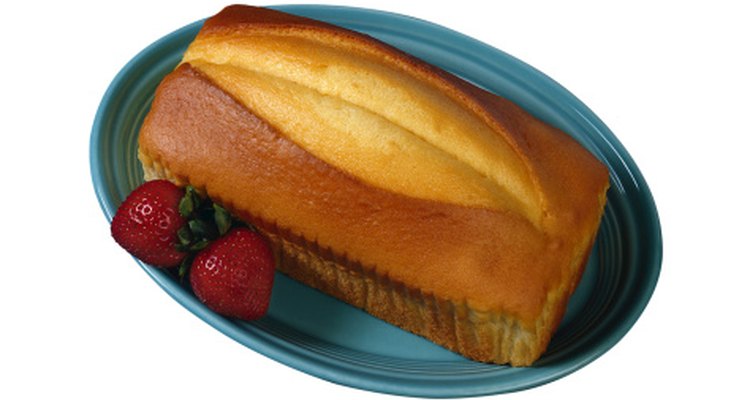
Bread has an infinite amount of variations. From light and flaky to rich and heavy, bakers use an arsenal of tricks and techniques to improve the quality and texture of bread products. Apply a wash just before you bake the bread to contribute to the overall appearance and taste of the finished loaf.
An egg wash is a type of glaze, which is made from a whole egg or just part of the egg. Professional bakers sometimes mix in other liquids, such as water or dairy products, to create the wash. Different ingredients in the wash help to create different results on the finished bread. Plus the egg wash holds on toppings, like nuts and seeds. The specific type of wash you should use depends on the bread recipe and the desired appearance of the finished loaf.
Function
Egg washes create a distinct crust on the bread and hold in moisture as the loaf bakes. Whole egg washes create a shiny, golden-brown appearance. Washes created using only the yolk result in a rich, brown crust. Using only the egg white creates a shiny coating. An egg wash also can be used as a glue to hold crumbly bread together. In addition, egg washes sometimes are used as a glue to affix seeds, nuts or other additives to the bread crust.
Considerations
Different additives produce different effects. Mixing butter or oil with the egg wash, for example, produces a softer crust that is velvety in texture. Using milk as an ingredient promotes browning, due to the amino acids and sugars found in dairy. Individuals who are sensitive or allergic to egg products should avoid using an egg wash. Those allergic to dairy should avoid using milk or cream as an additive to egg washes. Egg washes are fine for vegetarians who include eggs in their diet, but vegans should not use egg -- or dairy -- washes because these foods are animal-derived products.
Alternative Washes
Soy milk and almond milk are viable alternative glazes when baking bread. Milk alternatives produce a crisp, brown crust but don't readily hold seeds or other additions in place. To remedy this, milk substitutes can be thickened with a pinch of cornstarch. For sweeter breads, honey thinned with water into a light syrup can be used in place of an egg wash. This produces a shiny brown crust. Individuals with a sensitivity or allergy to honey should avoid this alternative wash. Water or oil thickened with a pinch of cornstarch is another alternative to the traditional egg glaze and produces a mild, golden-brown color when cooked.
Related Articles

Do You Use Egg Yolks or Whites on Top ...

What Can I Use Instead of Eggs to Brush ...

How to Egg Wash a Loaf of Challah Bread

Does It Matter if I Substitute Baking ...
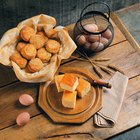
What Can I Use as an Egg Substitute ...
What Is Rusk Bread?
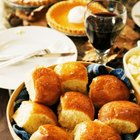
How to Make a Shine Glaze on Bread
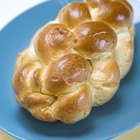
What Can I Use Instead of Eggs to Brush ...
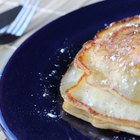
How to Use Muffin Mix to Make Pancakes
How to Bake Cupcakes With Mayo Instead ...
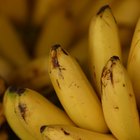
How to Replace Eggs With Applesauce, ...

What Does Eggs vs. Oil Do for Bread ...

How to Soften Overly Hard Bread

How to Replace Eggs With Mayonnaise

Whole Eggs Vs. Egg Yolks for Sweet Bread

Substitutes for Egg White Brushed on ...

How to Make Dough in a KitchenAid Mixer

How to Replace Vegetable Oil for Baking ...
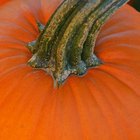
How to Make Pumpkin Bread Moist

Does Adding an Extra Egg to Brownie Mix ...
References
- “The Joy of Vegan Baking”; Colleen Patrick-Goudreau; 2007
- Finecooking: Egg Wash vs. Milk Wash
- Recipetips.com: Egg Wash
- "Artesian Breads at Home"; Eric Kastel, et al.; 2010
- Epicurious.com; How to Make Bread; Rose Levy Beranbaum
Writer Bio
Elizabeth Tumbarello has been writing since 2006, with her work appearing on various websites. She is an animal lover who volunteers with her local Humane Society. Tumbarello attended Hocking College and is pursuing her Associate of Applied Science in veterinary technology from San Juan College.
Photo Credits
Brand X Pictures/Brand X Pictures/Getty Images